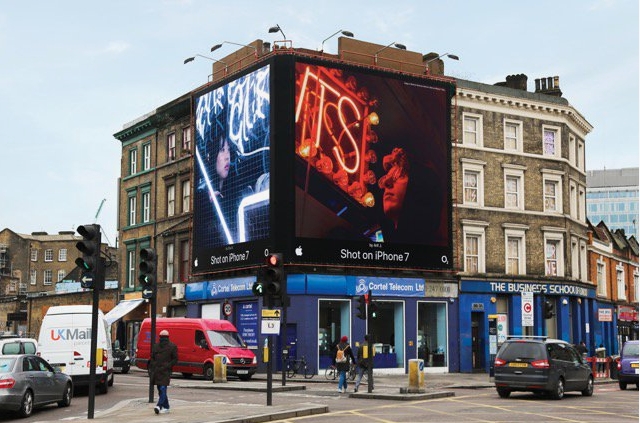Contents
- Why Do LED Displays Generate Heat?
- Basic Principles of LED Display Heat Dissipation
- Equipment to Enhance Heat Dissipation in LED Displays
- Choosing the Right Heat Dissipation Method for LED Displays
- Key Design Tips to Improve Outdoor LED Video Wall Heat Dissipation
As LED display technology advances, its applications in outdoor advertising and public information displays are expanding. However, outdoor environments—characterized by high temperatures, humidity, and dust—impose stringent requirements on the heat dissipation of LED displays. Effective heat dissipation design not only extends the lifespan of LED displays but also ensures stable performance. This article explores heat dissipation methods and design tips for outdoor LED video walls.

1. Why Do LED Displays Generate Heat?
Heat generation in LED displays is a natural consequence of their operation and is determined by the principles of heat transfer. Heat is primarily produced and dissipated through three mechanisms:
- Conduction: Heat is transferred through solid or liquid materials from high-temperature regions to low-temperature regions. In LED displays, this involves heat exchange between electronic components and metallic structures.
- Convection: Heat transfer occurs through the movement of fluids (typically air). Both natural convection and forced convection (via fans) contribute to heat dissipation.
- Radiation: Heat energy is emitted as electromagnetic waves, a process also utilized by LED displays for heat dissipation.

2. Basic Principles of LED Display Heat Dissipation
Heat dissipation in LED displays relies on three primary mechanisms:
- Heat Conduction: Heat flows from high to low temperature within a material. Metal conductors, solid insulators, and liquids can all effectively transfer heat.
- Metal: Transfers heat through free electron movement.
- Solid Insulators: Transfer heat through lattice vibrations.
- Liquids: Use molecular elastic waves for heat transfer.
- Convection: Heat transfer through fluid movement, either by natural convection caused by density differences or forced convection using fans to accelerate airflow.
- Radiation: Heat energy is emitted as electromagnetic waves, independent of a material medium, and can occur in a vacuum.

3. Equipment to Enhance Heat Dissipation in LED Displays
- Fans and Blowers: Forced air-cooling systems increase airflow to improve heat dissipation.
- Liquid Cooling Systems: Use liquid as a cooling medium, ideal for high-power-density LED displays.
- Thermoelectric Coolers: Utilize thermoelectric effects for heat transfer, suitable for specific applications.
- Heat Pipes: High-efficiency heat pipes rapidly transfer heat for efficient cooling.
4. Choosing the Right Heat Dissipation Method for LED Displays
- Natural Cooling: Suitable for low-power LED displays, relying on natural airflow for cooling. Simple and cost-effective.
- Forced Air Cooling: Uses fans to enhance airflow and is ideal for higher-power LED displays to significantly improve heat dissipation.
- Liquid Cooling: Employs liquids for high-efficiency heat removal, recommended for high-performance LED displays.
- Evaporative Cooling: Uses the absorption of heat during liquid evaporation, suitable for dry or high-temperature regions.
- Thermoelectric Cooling: Transfers heat via the Peltier effect, suitable for small-scale or temperature-sensitive applications.
- Heat Pipes: Utilize efficient thermal conductivity for high-density LED displays.

5. Key Design Tips to Improve Outdoor LED Video Wall Heat Dissipation
- Increase Heat Exchange Surface Area: Adding components like fins or heat sinks increases the surface area for heat dissipation. What are the differences between indoor and outdoor LED walls?
- Optimize Temperature Gradient: Ensure a sufficient temperature difference between LED components and surrounding air to promote effective heat transfer.
- Airflow Design: Proper airflow volume ensures efficient cooling. Increasing airflow is particularly effective for high-power applications.
- Duct Design: Ventilation ducts should be as smooth and direct as possible to reduce airflow resistance and improve cooling efficiency. Avoid sudden expansions or contractions in duct size—expansion angles should not exceed 20°, and contraction angles should not exceed 60°.
- Sealing Design: Maintain proper sealing of ducts and enclosures to prevent dust and moisture ingress, which can compromise cooling efficiency.
- Environmental Adaptation: Ensure heat dissipation systems are designed for the specific environmental conditions, including temperature, humidity, and dust levels.
Conclusion
A well-designed heat dissipation system significantly enhances the performance and lifespan of outdoor LED video walls, ensuring reliable long-term operation. With continued advancements in LED technology, innovative cooling solutions will likely emerge to further improve the performance and reliability of LED displays.





